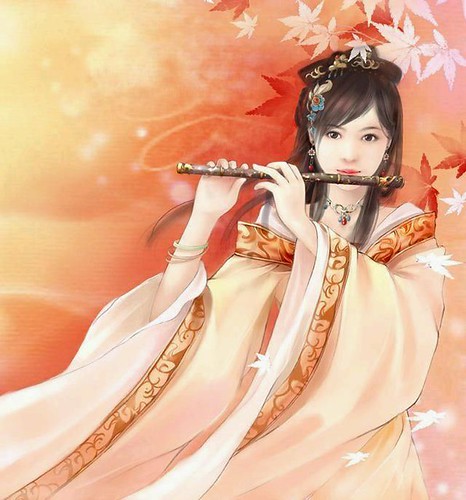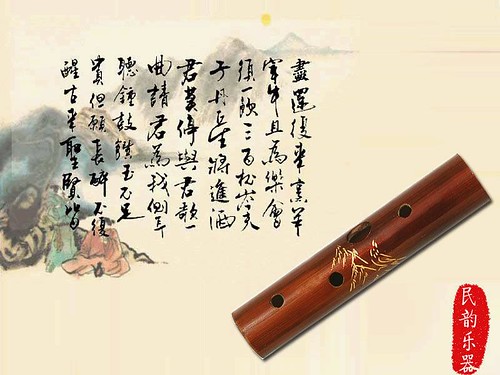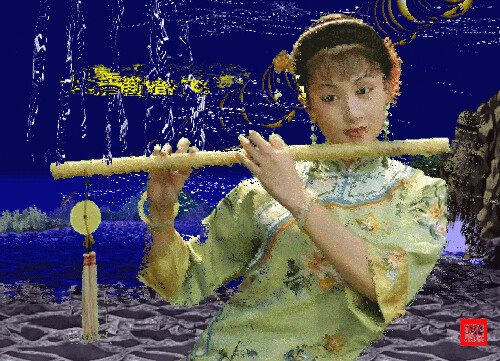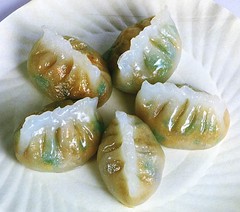| Home > Living in China > Art |
Dizi---A Chinese Traditional Musical Instrument
In China,there are many varied traditional musical instruments, such as Guqin ,Guzheng ,Pipa,flute and etc. Today i will introduce one instrument Dizi, which can produces fantastic and you will be caught up in the rhythm of its rhythm.
The dizi (Chinese: 笛子; pinyin: dízi), is a Chinese transverse flute. It is also sometimes known as the di (? or hengdi (橫笛), and has varieties including the qudi (曲笛) and bangdi (梆笛).
These names are likely to have multiple spellings, too, depending on the transliteration used to convert from Chinese names. Nonetheless, dizi seems to be the most common name (and written form) used in the West.
The dizi is a major Chinese musical instrument, and is widely used in many genres of Chinese folk music, as well as Chinese opera, and the modern Chinese orchestra. Traditionally, the dizi has also been popular among the Chinese common people, and it is simple to make and easy to carry.
 |
Most dizi are made of bamboo, which explains why dizi are sometimes known by simple names such as "Chinese bamboo flute." However, "bamboo" is perhaps more of a Chinese instrument classification like "woodwind" in the West. Northern Chinese dizi are made from purple or violet bamboo, while dizi' made in Suzhou and Hangzhou are made from white bamboo. Dizi produced in southern Chinese regions such as Chaozhou are often made of very slender, lightweight, light-colored bamboo and are much quieter in tone.
Although bamboo is the common material for the dizi, it is also possible to find dizi made from other kinds of kinds of wood, or even from stone. Jade dizi (or yudi, 玉笛) are popular among both collectors interested in their beauty, and among professional players who seek an instrument with looks to match the quality of their renditions; however, jade may not be the best material for dizi since, as with metal, jade may not be as tonally responsive as bamboo, which is more resonant.
The dizi is not the only bamboo flute of China, although it is certainly distinctive. Other Chinese bamboo wind instruments include the vertical end-blown xiao, the guanzi (double reed), the koudi, and the bawu (free reed).
 |
Whereas most simple flutes have only a blowing hole (known as chui kong in Chinese) and finger-holes, the dizi has very different additional hole, called a mo kong (膜孔), between the embouchure and finger-holes. A special membrane called dimo (笛膜, lit. "di membrane"), made from an almost tissue-like shaving of reed (made from the inner skin of bamboo cells), is made taut and glued over this hole, traditionally with a substance called ejiao. Garlic juice or glue sticks may also be used to adhere the dimo. This application process, in which fine wrinkles are created in the centre of the dimo to create a penetrating buzzy timbre, is an art form in itself.
 |
The dimo covered mokong has a distinctive resonating effect on the sound produced by the dizi, making it brighter and louder, and adding harmonics to give the final tone a buzzing, nasal quality. Dizi have a relatively large range, covering about two-and-a-quarter octaves.
So at last i have a good suggestion that music lover can spare time to enjoy the impressive rhythm produced by Dizi,such as the common melody 'Tianmi mi','Gao shan liu shui'... I am sure you will love this wonderful instrument soon.
Art
 more
moreDizi---A Chinese Traditional
In China,there are many varied traditional musical instruments,

Chinese Cheongsam
The cheongsam, or Qipao in Chinese, is evolved from a kind of ancient

The Dawn Breaks
(the prehistoric period - the 16th century BC) Ancient documents

Customs
 more
moreChinese Kungfu
Everybody was kungfu fighting
Niels Tsai, a kungfu enthusiast from Malaysia, was halfway up misty
Tai chi helps cut pain of knee arthritis
The traditional Chinese form of exercise known as tai chi can help
Kungfu Taste: Learn Martial Art in Shaolin Temple
The mention of Shaolin Temple conjures up images of a quiet and




 print
print  email
email  Favorite
Favorite  Transtlate
Transtlate 
